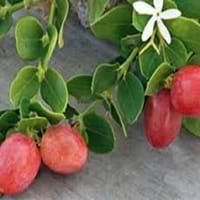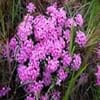Life Span
Perennial
Perennial
Type
Broadleaf Evergreen
Fruit
Origin
World/Pandemic
Central Asia, Southern Asia, Western Ghats, India
Types
Bigleaf hydrangea, Hortensia, Smooth hydrangea, Oakleaf hydrangea, Annabelle
congesta, paucinervia
Habitat
Forest edges, Hillside, Woods
Fertile bottom land, moist forests, Temperate Regions, Tropical Forests
USDA Hardiness Zone
12-15
Not Available
AHS Heat Zone
Not Available
8-3
Sunset Zone
21,22
Not Available
Habit
Upright/Erect
Upright/Erect
Flower Color
Not Available
Pale White, White
Flower Color Modifier
Bicolor
Bicolor
Fruit Color
Burgundy, Brown
Purple, Black
Leaf Color in Spring
Purple, Burgundy, Bronze
Green
Leaf Color in Summer
Purple, Burgundy, Bronze
Green
Leaf Color in Fall
Purple, Burgundy, Bronze
Green
Leaf Color in Winter
Purple, Burgundy, Bronze
Light Green
Plant Season
Spring, Summer, Fall, Winter
Spring, Summer, Fall
Sunlight
Full Sun, Partial Sun
Full Sun, Partial Sun, Partial shade
Type of Soil
Clay, Loam, Sand
Loam
The pH of Soil
Acidic, Neutral, Alkaline
Acidic, Neutral, Alkaline
Soil Drainage
Well drained
Well drained
Bloom Time
Spring, Late Spring, Early Summer, Summer
Spring
Tolerances
Drought, Salt
Drought
Where to Plant?
Container, Ground
Ground
How to Plant?
Seedlings, Stem Planting
Seedlings, Stem Cutting
Plant Maintenance
Medium
Medium
Watering Requirements
Not Available
Keep the ground moist but not water-logged
In Summer
Xeric/Desert, Drought Tolerant, Average Water
Lots of watering
In Spring
Moderate
Moderate
In Winter
Average Water
Average Water
Soil pH
Acidic, Neutral, Alkaline
Acidic, Neutral, Alkaline
Soil Type
Clay, Loam, Sand
Loam
Soil Drainage Capacity
Well drained
Well drained
Sun Exposure
Full Sun, Partial Sun
Full Sun, Partial Sun, Partial shade
Pruning
Remove damaged leaves, Remove dead branches, Remove dead leaves
Prune if you want to improve plant shape, Remove dead leaves
Fertilizers
All-Purpose Liquid Fertilizer
Compost, fertilize in growing season
Pests and Diseases
Red blotch
Aphids, Earwigs, Insects, Mildew, Red blotch, Rust, sawflies
Plant Tolerance
Drought, Salt
Dry soil, Heat And Humidity
Flowers
Insignificant
Insignificant
Flower Petal Number
Single
Single
Foliage Texture
Medium
Medium
Foliage Sheen
Glossy
Matte
Attracts
Bees, Flies
Birds, Butterflies, Fruit Bats
Allergy
Chest tightness, Diarrhea, Dizziness, Nausea, Vomiting
Eczema, Mouth itching, Throat itching
Aesthetic Uses
Not Available
Not Available
Beauty Benefits
Not Available
good for lips, Remove blemishes
Edible Uses
Not Available
Yes
Environmental Uses
Air purification
Air purification, Food for animals, Food for birds, soil stabilisation
Medicinal Uses
Fever, Kidney problems, Urinary tract problems
Anemia, Diuretic, Potassium, Rich in Iron, Vitamin C
Part of Plant Used
Flowers, Root
Fruits, Leaves
Other Uses
Not Available
Added to salads, Cosmetics, Culinary use, Used as a nutritious food item, Used As Food, Used for its medicinal properties
Used As Indoor Plant
Not Available
No
Used As Outdoor Plant
Yes
Yes
Garden Design
Container, Foundation, Hedges, Mixed Border, Screening, Wind Break
Edible, Fruit / Fruit Tree, Hedges
Botanical Name
DODONAEA viscosa 'Purpurea'
Carissa carandas
Common Name
Hopbush, Purple Hopseed Bush
Black Currant
In Hindi
Hydrangea
करोंदा, कालि मैना
In German
Hortensie
Carandas
In French
Hortensia
karondas
In Spanish
Hortensia
karondas
In Greek
υδραγεία
karondas
In Portuguese
Hortênsia
karondas
In Polish
Hortensja
karondas
In Latin
Hibiscus
karondas
Phylum
Not Available
Magnoliophyta
Class
Not Available
Magnoliopsida
Order
Not Available
Gentianales
Family
Sapindaceae
Apocynaceae
Genus
Not Available
Carissa
Clade
Not Available
Angiosperms, Asterids, Eudicots
Tribe
Not Available
Not Available
Subfamily
Not Available
Not Available
Number of Species
Not Available
Not Available
Properties of Purple Hopseed Bush and Karonda
Wondering what are the properties of Purple Hopseed Bush and Karonda? We provide you with everything About Purple Hopseed Bush and Karonda. Purple Hopseed Bush doesn't have thorns and Karonda doesn't have thorns. Also Purple Hopseed Bush does not have fragrant flowers. Purple Hopseed Bush has allergic reactions like Chest tightness, Diarrhea, Dizziness, Nausea and Vomiting and Karonda has allergic reactions like Chest tightness, Diarrhea, Dizziness, Nausea and Vomiting. Compare all the properties and characteristics of these two plants. Find out which of these plant can be used as indoor plant. If you are interested to decorate your house and garden, find out aesthetic uses, compare them and select the plant which will beautify your surrounding. Along with beautification, try comparing medicinal and edible uses of Purple Hopseed Bush and Karonda and you can choose the plant having best and most benefits.
Season and Care of Purple Hopseed Bush and Karonda
Season and care of Purple Hopseed Bush and Karonda is important to know. While considering everything about Purple Hopseed Bush and Karonda Care, growing season is an essential factor. Purple Hopseed Bush season is Spring, Summer, Fall and Winter and Karonda season is Spring, Summer, Fall and Winter. The type of soil for Purple Hopseed Bush is Clay, Loam, Sand and for Karonda is Loam while the PH of soil for Purple Hopseed Bush is Acidic, Neutral, Alkaline and for Karonda is Acidic, Neutral, Alkaline.
Purple Hopseed Bush and Karonda Physical Information
Purple Hopseed Bush and Karonda physical information is very important for comparison. Purple Hopseed Bush height is 350.00 cm and width 195.00 cm whereas Karonda height is 120.00 cm and width 120.00 cm. The color specification of Purple Hopseed Bush and Karonda are as follows:
Purple Hopseed Bush flower color: Not Available
Purple Hopseed Bush leaf color: Purple, Burgundy and Bronze
Karonda flower color: Pale White and White
- Karonda leaf color: Green
Care of Purple Hopseed Bush and Karonda
Care of Purple Hopseed Bush and Karonda include pruning, fertilizers, watering etc. Purple Hopseed Bush pruning is done Remove damaged leaves, Remove dead branches and Remove dead leaves and Karonda pruning is done Prune if you want to improve plant shape and Remove dead leaves. In summer Purple Hopseed Bush needs Xeric/Desert, Drought Tolerant, Average Water and in winter, it needs Average Water. Whereas, in summer Karonda needs Lots of watering and in winter, it needs Average Water.


